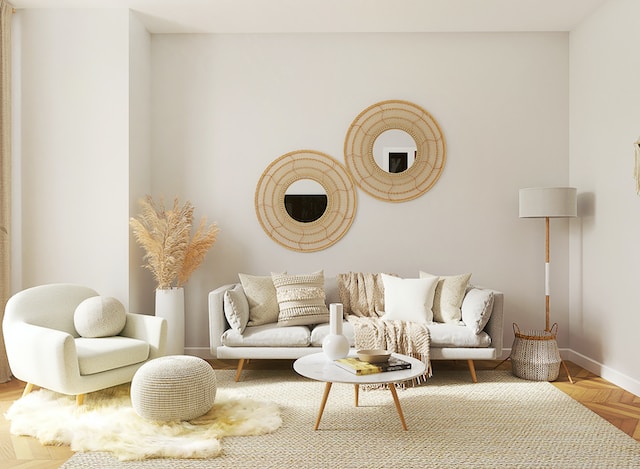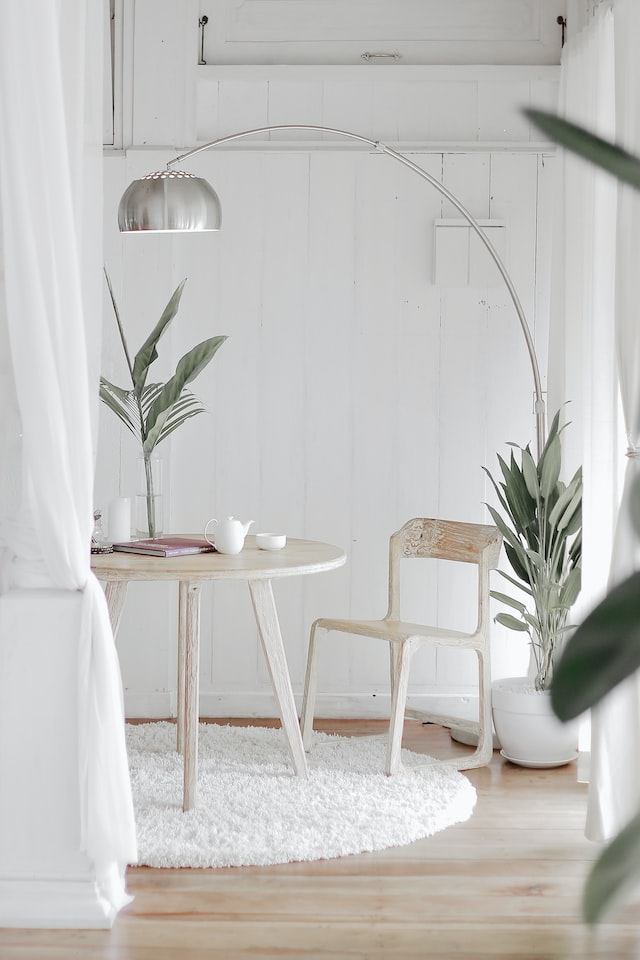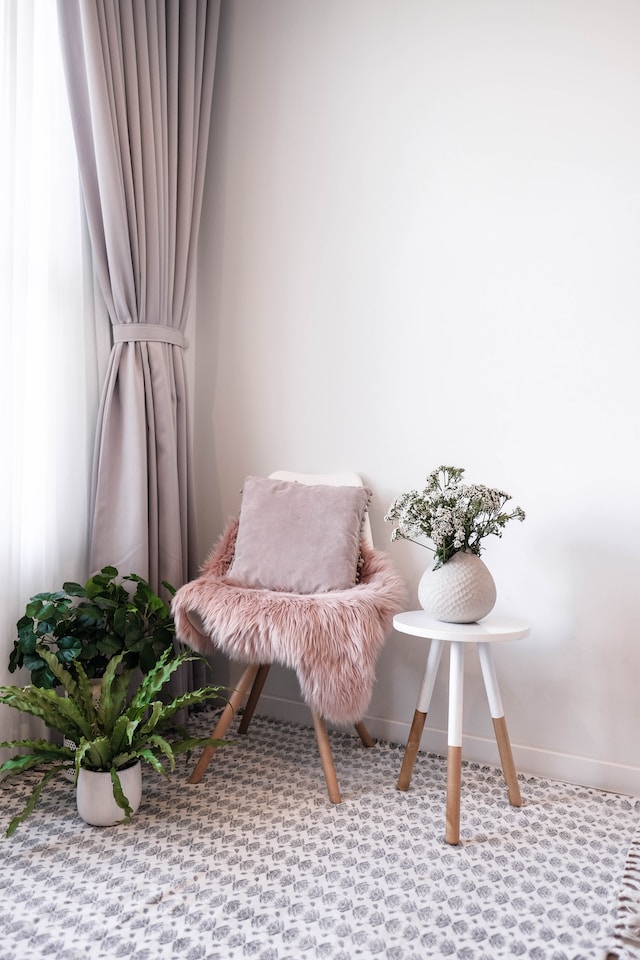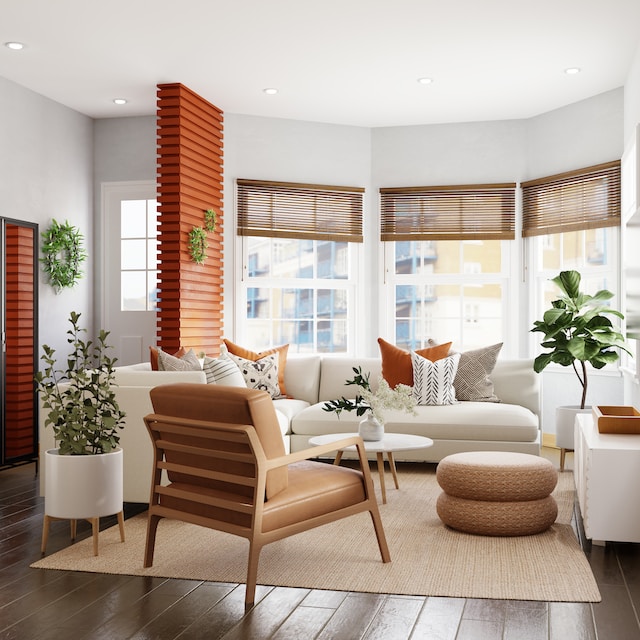
Have you ever walked into a room that felt flat, uninviting, and lacked character? Perhaps it was a space designed with the intention of being minimalist, but instead it just felt empty and barren. The key to creating a compelling and inviting minimalist space lies in the use of textures.
Textures are surfaces that create tactile sensations and visual interest. They’re the grain on a wooden table, the fluffiness of a plush rug, the roughness of a brick wall, and the softness of a cozy knit blanket. Adding textures to a minimalist space can help bring depth, warmth, and personality to an otherwise stark and sterile room.
Choosing the Right Textures
Texture is one of the most underrated yet impactful elements to any minimalist space. Creating the right balance between minimalism and texture can make a significant difference in the overall look and feel of your space. Here are some key factors to consider when choosing the right textures for your minimalist space:
Complement the Existing Minimalist Aesthetic
The critical factor when selecting textures for a minimalist space is ensuring they match the existing aesthetic. To keep a minimalist space cohesive, you should select textures that complement the existing decor. If your space already has a clean and minimalistic aesthetic, then it’s best to choose textures that fit that style. Texture should add visual interest without overwhelming the space.
Considering the Scale and Proportion of Textures
When introducing texture to a minimalist space, it’s essential to pay attention to scale and proportions. In addition to complementing the existing aesthetic, the texture should also integrate seamlessly into the overall design. When choosing textures, think about how they will look in relation to the other elements in the room, such as furniture or decor.
Exploring Different Materials and Finishes
There are a variety of materials and finishes that can add texture to your space. Here are some examples:
Natural textures: Incorporating natural textures such as wood, stone, or plants can bring an earthy and organic feel to your minimalist space.
Fabric textures: Adding fabric textures such as linen, velvet, or wool can bring a soft and cozy feel to your space.
Metallic textures: Incorporating metallic textures such as copper or brass can add a touch of elegance to your minimalistic space.
Geometric textures: Including geometric patterns in your decor, such as a woven rug or patterned throw pillow, can add visual interest without being too overwhelming.
Painted textures: Instead of traditional wallpaper, you can try creating texture with a textured wall paint, such as Venetian plaster or stucco.
Let’s take a look at some ways to incorporate textures into a minimalist space:
1. Mix and match textures: Consider combining different textures to create a dynamic and interesting space. For example, pairing a smooth leather couch with a chunky knit throw blanket or a fluffy faux fur rug can create a juxtaposition that is visually appealing and engaging.
2. Play with patterns: Patterns can add texture too! Try layering different patterned textiles like a stripe or a polka dot, or even adding a patterned wallpaper to your space.
3. Use natural materials: Opt for materials that have a natural texture like wood, stone, cork, or jute. These materials add warmth and a sense of grounding to a space.
4. Add depth with lighting: Lighting can also play a role in adding texture. Experiment with different types of lighting, like a paper lantern, a shiny pendant light, or even a string of fairy lights, to create interesting shadows and light patterns.

Textures can add a layer of interest and warmth to a minimalist space. They help to ground the space and create a welcoming atmosphere. By playing with different textures and materials, you can create a space that is both minimal and inviting.
Furniture and decorative objects can be super important to the way you use texture in your space. Some people think minimalism incorporates less furniture and no decorative objects, but that rule is not universal. A room should not be completely empty and barren, but it instead should be designed as a space primarily for people – not just storage for a bunch of objects.
Incorporating Textures in Different Elements
When it comes to incorporating textures in a minimalist space, it’s not just about the decor. Every element of your space, from the walls to the furniture, can be an opportunity to add depth and interest with texture. Here are some ways to incorporate textures in different elements of your minimalist space:
Walls and Ceilings
Textured wallpapers or wall coverings – Adding a textured wallpaper or wall covering can create interest and depth in your minimalist space without adding clutter. For example, a grasscloth wallpaper can add a natural, organic texture to your walls.
Exposed brick or concrete surfaces – Exposed brick or concrete surfaces can add a raw and industrial texture to your space. Leave them bare or paint them white for a minimalist twist.
Flooring
Natural materials – Incorporating natural materials such as hardwood, stone, or bamboo can add a warm and earthy texture to your floors. Opt for a simple and natural finish to keep the floor in line with the minimalist aesthetic.
Rugs and carpets with interesting patterns – Adding a rug or carpet with an interesting pattern can bring in a subtle texture that draws the eye without overpowering the space. A simple geometric or abstract pattern can work well in a minimalist space.

Furniture and Upholstery
Mixing materials – Mixing materials such as wood, metal, and leather can add interest and texture to your minimalist furniture. For example, a wooden coffee table with metal legs can provide a subtle contrast and depth.
Textured fabrics – Adding textured fabrics such as velvet, linen, or tweed can bring a soft and cozy texture to your minimalist space. Opt for neutral colors to keep the focus on the texture rather than the color.
Decorative Accessories
Incorporating textured artwork or wall hangings – Adding textured artwork or wall hangings can bring in a subtle texture without cluttering your minimalist space. Consider a piece with a 3D element, such as a woven wall hanging, for added interest.
Adding plants or natural elements for organic textures – Incorporating plants or natural elements such as rocks or branches can add an organic texture to your minimalist space. Choose plants with interesting leaves or textures, such as a snake plant or a fiddle leaf fig, for added interest.
Creating Contrast and Balance
When it comes to incorporating textures into a minimalist space, it’s important to consider creating contrast and balance. Adding texture to a space can help highlight focal points and create a sense of balance by mixing smooth and rough textures. The right use of color and lighting can also play an important role in creating contrast that enhances the look and feel of your space.
Use textures to highlight focal points
One way to create contrast in a minimalist space is to use textures to highlight focal points. For example, in a living room, you could add a textured area rug to draw attention to the seating area. By choosing a rug with a bold pattern or texture, you can create a focal point that enhances the overall design of the space. The texture can also help to anchor the furnishings and provide a visual contrast to the smooth surfaces of walls and furniture.
Balance smooth and rough textures
Balance is key when it comes to incorporating textures into a minimalist space. To achieve balance, it’s important to mix smooth and rough textures. This can be done by layering textures or by combining different materials, such as wood and metal. A smooth leather sofa can be balanced with a textured wool throw and a rough-hewn wood coffee table. The key is to create a sense of harmony by mixing textures in a way that complements the overall design of the space.
Consider color and lighting in relation to textures
Color and lighting can also play a vital role in creating contrast and balance when it comes to texture. You could use lighting to highlight the texture of a piece of artwork or to create shadows that enhance the texture of a textured wall covering. In terms of color, you can add interest by using contrasting colors or by adding pops of color to accentuate textured elements in a space. For example, a brightly colored pillow can draw attention to a textured fabric upholstery on a sofa.
Inspirations:
- A smooth marble tabletop can be paired with a rough-hewn wood base to create a balanced and interesting dining table.
- A leather armchair with a smooth surface could be paired with a textured fabric throw to create a cozy and inviting reading nook.
- A wooden wall hanging with a carved design can provide a focal point for a minimalist bedroom while also adding texture to the space.
- Textured glass vases or jars can add a subtle texture to a minimalist shelving unit, while also providing visual interest.
Practical Tips for Using Textures
Using textures in a minimalistic space can make a significant impact on the overall look and feel of the space. However, it can also be challenging to find the right balance between minimalism and texture. Here are some practical tips to help you incorporate textures into your minimalist space successfully.
Start with small accents or accessories
If you’re unsure about how to incorporate textures into your minimalist space, start with small accents or accessories. Begin with a textured throw pillow, a woven rug, or a piece of artwork with a 3D element. These small additions can add visual interest without overwhelming the space. Gradually add more textured elements to your space as you become more comfortable with the style.

Experiment with layering textures gradually
Layering textures is a great way to add depth and warmth to your minimalist space. However, it’s important to layer textures gradually to avoid clutter or visual overload. Begin with a simple base layer, such as a smooth leather sofa, and then add a layer of texture with a woven throw blanket. Consider adding a third layer of texture with a textured rug or wall hanging. The key is to experiment and find the right balance for your space.
Maintaining a cohesive and harmonious look
When incorporating textures into a minimalist space, it’s important to maintain a cohesive and harmonious look. Choose textures that complement the existing decor and work together to create a sense of balance. For example, if you’re adding a textured area rug, ensure that the colors and patterns in the rug match the other elements in the space. Avoid using too many textures that clash or overwhelm the space.
Incorporating textures into a minimalist space is a delicate balancing act, but when done right, it can add depth and warmth to your home. By focusing on complementing the existing aesthetic, paying attention to scale and proportions, and experimenting with different materials and finishes, you can create a space that feels both minimal and inviting. Remember to create contrast, balance, and harmony through the use of lighting and color, and to start small and gradually layer textures to avoid overwhelming the space. With these tips in mind, you can add the perfect touch of texture to your minimalist space and make it truly unique and personal.
